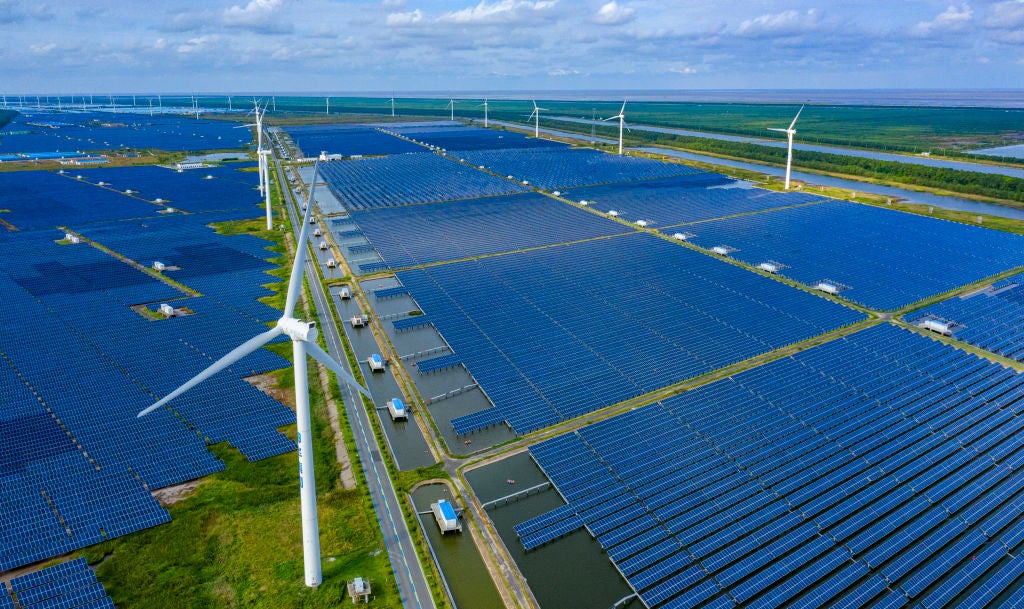
The International Energy Agency (IEA) expects 2021 to see a record 290 gigawatts (GW) of renewable energy capacity installed globally, despite the rising costs of key commodities used for wind turbines and solar panels. Additions, however, remain far short of what is needed to reach net zero by 2050.
The new forecasts are above even the most optimistic predictions in the IEA’s 2020 report, which put newly installed capacity in 2021 at 266GW. The IEA’s ‘main case’ forecast had the figure at just 218GW. The industry also significantly outperformed expectations in 2020 with 280GW installed, compared with a forecast of 198GW.

Discover B2B Marketing That Performs
Combine business intelligence and editorial excellence to reach engaged professionals across 36 leading media platforms.
The organisation now expects total renewable capacity to reach 4,801GW by 2026 – equivalent to the total capacity currently provided by fossil fuels and nuclear energy combined. Renewables are expected to make up more than 95% of global power capacity added to 2026, with total offshore wind capacity expected to triple.
The improved outlook has been driven by a slew of policy announcements made in the run-up to November’s COP26 climate conference, such as China’s commitment to reaching net zero by 2060. China alone is expected to account for 43% of newly installed renewables capacity up to 2026.
The 2020 surge was partly driven by a significant increase in added wind capacity in China, a result of developers rushing to complete projects before the expiry of subsidies.
The strong performance of the renewables sector is especially impressive given the increase in the prices of key commodities since the beginning of 2020. Prices for PV-grade polysilicon, a key component in solar panels, have quadrupled, while steel, copper and aluminium have risen by 50%, 60% and 80%, respectively. Costs have also been impacted by the global shipping squeeze, which has led to a six-fold increase in shipping fees.

US Tariffs are shifting - will you react or anticipate?
Don’t let policy changes catch you off guard. Stay proactive with real-time data and expert analysis.
By GlobalDataIf prices remain high throughout 2022, three years of cost reductions for solar power and five for wind could be erased, warns the report, raising the cost of installing the forecast capacity by about $100bn – equivalent to one-third of the current annual global investment in renewables.
Renewables aren’t the only power source that have been hit by rising commodity prices, however. The costs of gas and coal have risen even further, resulting in a net gain to renewables’ economic competitiveness.
Better but not good for renewables
The large-scale integration of renewables into national energy systems is currently hampered by a lack of sufficient storage capacity. Output from certain renewable sources is notoriously variable, depending on conditions such as wind and sunshine. This makes storage essential to avoid disruptions to the energy supply.
The IEA forecasts that global installed storage capacity will increase by 56% by 2026, slightly less than the 60% forecast increase in renewable generation capacity. Hydroelectric storage is expected to account for almost half of this increase (42%), with utility-scale batteries accounting for much of the rest.
Despite the improved outlook for renewables, investment remains far below the amount specified in the IEA’s roadmap to net zero by 2050. Total capacity additions to 2026 would need to be 80% above the forecast amount for the world economy to be on track to meet that target.
This doesn’t even touch on the other barriers to achieving the IEA’s Net Zero By 2050 Scenario, which assumed that policymakers would ban the opening of new mines and oil fields by 2021.
Despite the rapid growth of renewables, continued investment in fossil fuels is putting the twin goals of net zero by 2050 and limiting warming to 1.5°C increasingly out of reach.
Just four days after the COP26 climate conference concluded, the US launched the largest-ever auction of oil and gas fields in the Gulf of Mexico. The UK, meanwhile, is currently considering opening its first new coal mine in decades.
As COP26 President Alok Sharma said at the conclusion of the conference: “We have kept 1.5 degrees alive [...] but its pulse is weak.”





